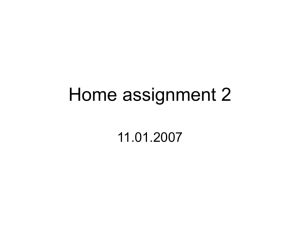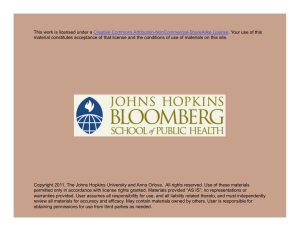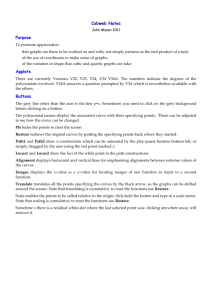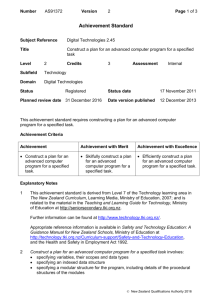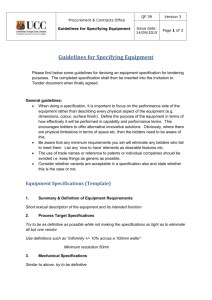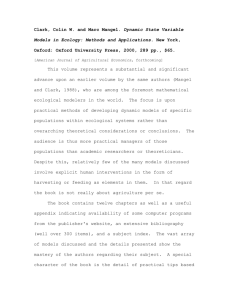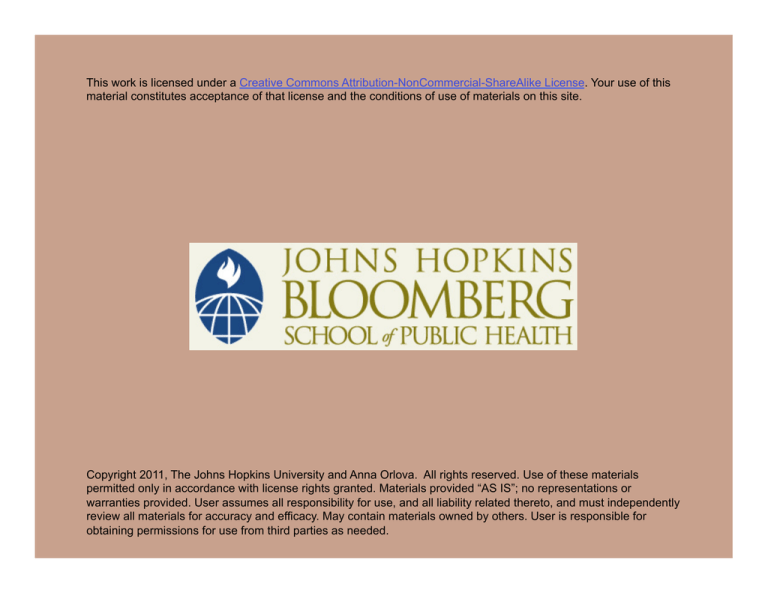
This work is licensed under a Creative Commons Attribution-NonCommercial-ShareAlike License. Your use of this
material constitutes acceptance of that license and the conditions of use of materials on this site.
Copyright 2011, The Johns Hopkins University and Anna Orlova. All rights reserved. Use of these materials
permitted only in accordance with license rights granted. Materials provided “AS IS”; no representations or
warranties provided. User assumes all responsibility for use, and all liability related thereto, and must independently
review all materials for accuracy and efficacy. May contain materials owned by others. User is responsible for
obtaining permissions for use from third parties as needed.
Section D
System Architecture
System Architecture
3
Architecture
The top layer of the diagram depicts
environmental stewardship functions aimed to
solve environmental health problems
(knowledge)
- That is, system goals
Knowledge
level
The middle layer shows the relationships
between data on hazards, exposure, outcomes,
and affected population
- This data is manipulated/analyzed/displayed
(that is, statistically analyzed, mined, GISbased) and presented as information
Information
level
The bottom layer of the EPHTN architecture
shows Data from data sources on hazards,
exposure, disease outcomes, and affected
population
Data
level
4
Requirements Elicitation Includes:
Specifying goals
Specifying high-level system
architecture
Specifying actors (business and
technical)
Specifying hardware and
software requirements
Specifying functional and nonfunctional requirements
Specifying system evaluation
plan
Specifying project timeline and
documentation
Specifying use cases
Developing models/diagrams
- Use case, workflow, and
dataflow
5
Requirements Elicitation Includes:
Specifying goals
Specifying high-level system
architecture
Specifying actors (business and
technical)
Specifying hardware and
software requirements
Specifying functional and nonfunctional requirements
Specifying system evaluation
plan
Specifying project timeline and
documentation
Specifying use cases
Developing models/diagrams
- Use case, workflow, and
dataflow
6
Testing
During testing, developers find differences between the system and
its model by executing the system (or parts of it) with sample input
data set
The goal of testing is to discover as many faults as possible so that
they can be repaired before the delivery of the system
During unit testing, developers compare the object design model
with each object and subsystem
During integration testing, combination of subsystems are
integrated together and compared with the system design model.
System tests are planned during requirement elicitation and
analysis activities; integration tests are planned during system
design activity
7
Four Levels of Information System Evaluation
Level I: technical level—does system work?
- Does system support data entry (input)?
- Can system generate reports (output)?
Level II: usability level—does the user like the system?
- Does user like screen layout, color scheme, font size (input)?
- Does user like the report layout, font size (output)?
Level III: functional level—does system support user functions?
-
Does system support the user workflow and dataflow?
Level IV: knowledge level—does system support defined goals?
- Does system support user expectations in solving the problem?
8
Pilot Testing
The first three levels of system evaluation are conducted during
pilot testing—a step that follows the system development phase
prior to the full implementation
System faults detected during the pilot testing are documented in
the Pilot Testing Report, corrected and tested again; and
documented in the Pilot Testing Report again
Accepted by user after pilot testing, the system is ready to be
implemented
9
Requirements Elicitation Includes:
Specifying goals
Specifying high-level system
architecture
Specifying actors (business and
technical)
Specifying hardware and
software requirements
Specifying functional and nonfunctional requirements
Specifying system evaluation
plan
Specifying project timeline
and documentation
Specifying use cases
Developing models/diagrams
- Use case, workflow, and
dataflow
10
Information System Development Timeline
Information system is a commercial product; as any commercial
product, it has a strict timeline in which it is delivered as follows:
- Requirement analysis and design: two to three months
- Development: six months
- Pilot testing – during the ninth month
- Implementation: 10–24 months
If you do not have working system in two years:
- You incorrectly specified the requirements
-
You chose wrong vendor
Next slide shows the example of the information system
development timeline and deliverables by system design phase
11
Timeline and Deliverables
Month
1 2 3 4
Requirement elicitation
and design
5 6 7 8 9 10 11 12 1 2 3 4 5 6
Requirement Analysis Document (RAD)
System development
System Development Specification Document
Pilot testing
Pilot Testing Protocol and Report
System implementation
System Documentation Prototype
System evaluation
System Evaluation
Protocol and Report
System operation
System Documentation
and Operational Manual
12

